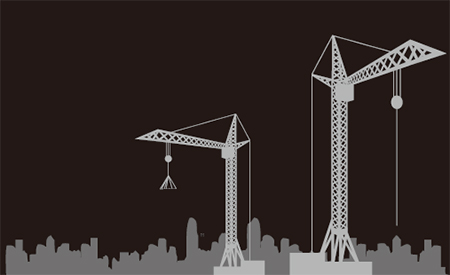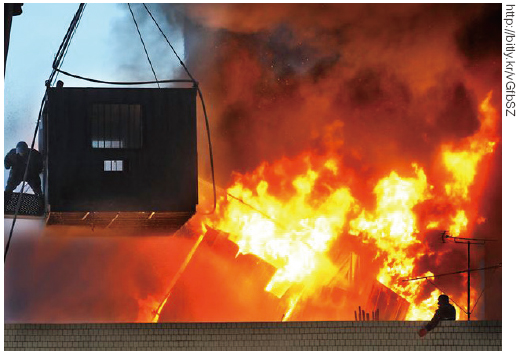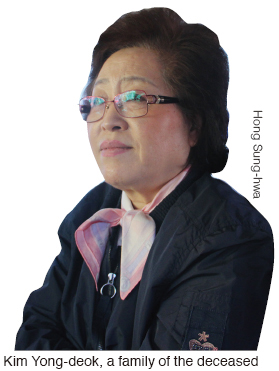
The Yongsan incident occurred on Jan. 20, 2009 at Hangangno 2-ga, Youngsan-gu, Seoul, Korea. Store tenants in the fourth district of Yongsan were forced to move out without enough compensation, so 30 people among them decided to protest on the top of the building Namildang. While the police suppressed protesters ruthlessly by mobilizing commandos, a fire broke out from the lookout post of the building. This fire led to the death of four protesters and one policeman.

After the incident, the prosecution announced results of its investigation and concluded that the use of firebomb by demonstrators was the main cause of ignition. This announcement has left many doubts about the cause of the fire. Especially, a controversy about this conclusion had gotten bigger as the prosecution’s conclusion was based on the testimonies of commando members, which was reversed later. Even though the cause of the fire was not clear, the Superior Court convicted the demonstrators to imprisonment on Oct. 28, 2009. Following the judgement, protesters who survived were penalized to be imprisoned from four to five years due to killing a cop.
Ten years have passed since four citizens and one policeman were sacrificed. The prosecution is now reinvestigating the incident through a special committee to look into our nation’s past. Unfortunately, nothing has been proven yet.

How do you feel about the 10th commemoration of the Yongsan Incident?
Right after the tragedy, the victims’ families and I promised to get to the bottom of the incident in 10 years. However, as though 10 years have passed, the truth has not been clearly revealed. I feel terribly sad and frustrated about it, but I do not think that we just wasted the past 10 years. Many people have worked so hard to reveal the truth and their effort made the prosecution reinvestigate the incident. Even though few things came out into the open, the 10th commemoration is still worth something as it can be a new beginning of the fact-finding.
How did you start working as an executive secretary in the Fact-Finding Committee?
During my studies in university, I was interested in evicted residents’ problems, so I participated in many different campaigns for those people. In the case of the fourth district of Yongsan, I visited there several times to educate relocated residents on how to protect their residential rights before the tragic incident occurred.
One day, I heard the news that some residents were going to have a protest on the top of the building named Namildang. In most cases, that kind of protest lasts for a long time, so I thought I could visit them after a few days. However, on the next day, the so-called the Yongsan Incident occurred and some residents were sacrificed. As people were killed because of the excessive use of police authority, I expected the government to punish the police and apologize to citizens and its victims. Unfortunately, my expectation was not realized and the long journey to reveal the truth began.

What are the main suspicions that you are trying to clarify?
The most important point is that the government only focused on the death of one policeman without any consideration of other four citizens who were also sacrificed. The prosecution indicted evicted residents to hold responsibility of the death of the policeman. However, the prosecution did not try to find out why the four citizens died. Those four victims were labeled as “terrorists” who killed the policeman.
Moreover, the police did an autopsy of the four victims without the approval from the bereaved families. The police said the autopsy was inevitable because of difficulties in identifying the victims. However, it is hard to understand their opinion because several identification cards and documents were found around the dead bodies.
To make things worse, the prosecution did not release the 3,000 pages of the investigation records even though they received the court order to do so. Under current legislation, it is impossible for the court to take a record from the prosecution directly. It is a serious problem as there is no way to apply legal limitations to the prosecution.
Lastly, it is important to clarify the reason why the government rashly repressed the protest with police commandos. The police insisted that it was a state of terrorism so they had to dispatch the police commandos to secure the safety of the citizens. The police asserted that the utilization of Motolov Cocktails by protesters was the main reason for the dispatch of the police commando. However, according to the official report by the police, they decided to do so before demonstrators started to use firebombs. Moreover, at that time, they did not regulate any traffic around the protest site. This implies that the protests were not that “serious” in menacing public security. This contradicts to the statement of the police that there was a detour in a state of “terrorism.”
Were there any changes to protect store tenant’s rights after the Yongsan incident?
Unfortunately, little has changed in 10 years. Tenants can now receive compensations for their business loss for four months, which means compensations for one month are added compared to the past. This is not a fundamental solution as it only considers the length of the compensation. Under current legislation, store tenants are informed to move out right before the demolition of the building when a constructor finishes land valuation. In many cases, the evaluated price of compensation is so low that people cannot make a living in another area with that money. This makes the protest of the residents more severe. Even after our society faced many tragic incidents like those in Yongsan, the fundamental compensation-related system has not changed much yet.

The fourth district of Yongsan, where the Yongsan incident took place, is now being replaced by new buildings. How do you feel about this?
The construction began last year and until then, the place remained empty for seven to eight years. I cannot understand why people tried to get rid of that building in a hurry, if they were not going to do anything for several years. Five people including my husband were sacrificed because of greed derived from some developers to renew this land. Is this new building worth as much as human lives? I never think so. I feel indescribably sad whenever I see this building and think about what happened in the past 10 years.
Can you tell me more about your life before the incident?
My husband and I were running a restaurant in Yongsan to earn a living. One day, I heard that this land would be renewed and we would be forced to move out. Soon, employees from the constructor came to value our land. They said that they were going to value our land in a good price so we expected to receive at least 100 million KRW. My husband and I invested over 200 million KRW to open the restaurant so we hoped to receive at least a half price of the whole investment. However, the result showed that we could get only 60 million KRW. We were devastated with that disappointing amount of money, as we could not open a new restaurant in another area with that amount. 60 million KRW is not even enough to open a street stall because of concession money.
In this desperate situation, my husband decided to join the protest. It was an inevitable decision for him because it was a matter of the whole family members’ livelihood. The day before the incident, he drank with our two sons and cried, worrying about our family. He was such an innocent patriarch. Later when the court labeled him as a terrorist, I could not stand it. That does not make sense as I know his human nature is basically good. Sometimes, I wonder if I had stopped him from participating in the protest, he would not have died. This regret makes me feel guilty and breaks my heart all the time.

What do you think about the reinvestigation by the prosecution?
It is really a big progress in that we have a chance to re-investigate the incident. However, the committee is not operating properly because of its structural problems. The positions of prosecution executives who framed the victims as terrorists are now higher than those of the committee members. Therefore, the investigators of the committee are often forced with pressure by executives who make fact-finding activities more difficult. I am so worried because only a month is left before the termination of the committee activities. I am desperately waiting for the committee to reveal the truth, but I am not sure if it will be possible.

After the Yongsan disaster, “The Commercial Building Lease Protection Act” has been revised, but it still has several problems. Under this law, tenants receive only a small amount of expenses for migration, and it is not enough for them to get a new place to rent in another area.
For more specific information about current problems related to renewal, The UOS Times interviewed professor Nahm Kee-bom of Department of Urban Sociology. He said, “The forced eviction still exists like what happened in Yongsan. The amount of compensation is small, which eventually causes conflicts between people who want to make tenants move out and tenants who try to stay.”
After the Yongsan disaster, the damage caused by public power has been reduced, however, there are still problems between individuals. The main cause of problems between individuals is the rent and premium. Because of gentrification which is a process of renovating deteriorated urban neighborhoods by means of the influx of more affluent residents, merchants are suffering from a large increase in store rent. Not only the gentrification, but also the speculation creates problems between the estate proprietor and the tenant. The estate speculation is a serious problem these days, too. Some insist it is necessary to prevent estate speculation, but others criticize it is an excessive violation of private property rights. It is hard to predict which perspective is right or effective. For that reason, not only should the government but also individuals should think of ways to solve this problem.
According to professor Nahm, measures should be taken judicially to reduce the damage of renewal. Policies have to be prepared for helping tenants who are practically evicted. Moreover, perceptions of individuals, as well as the efforts of civil servants, have to change. For making a change in individuals’ perceptions, Nahm suggested the public concept of land ownership. This concept refers to the government’s involvement in the land market if the land market fails to function properly, while allowing private ownership of land to be used for public welfare. The origin of this concept began with the theory of Henry George, an economist and the author of “Progress and Poverty.”
Throughout the above interviews, The UOS Times could learn how this tragedy destroyed lives. We also found out that our society has a long way to go not to repeat the same mistake, as we only had few changes in the past ten years. Moreover, while covering this case, we found out there is a small number of people who remember the incident. Some people said, “Does this kind of undemocratic incident still happen in the 2000s?” The UOS Times would like to answer to this question as follows; “Totally yes, so we should always watch over whether our democracy works properly or not.”
Choi Eun-hye
CEH9534@uos.ac.kr
Hong Sung-hwa
hsw0026@uos.ac.kr

